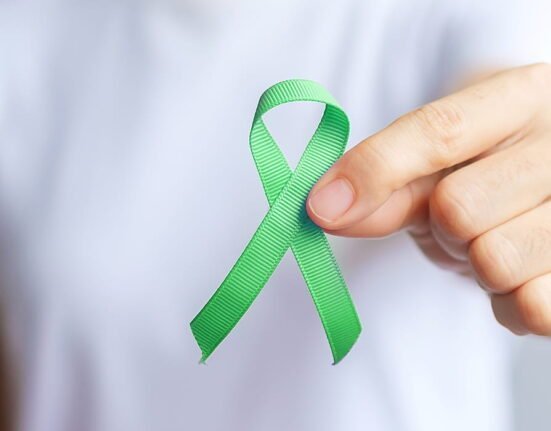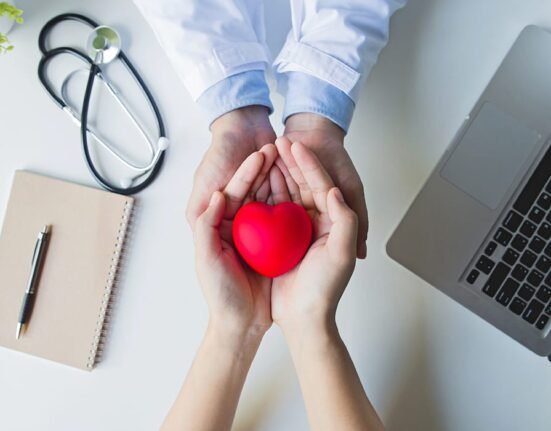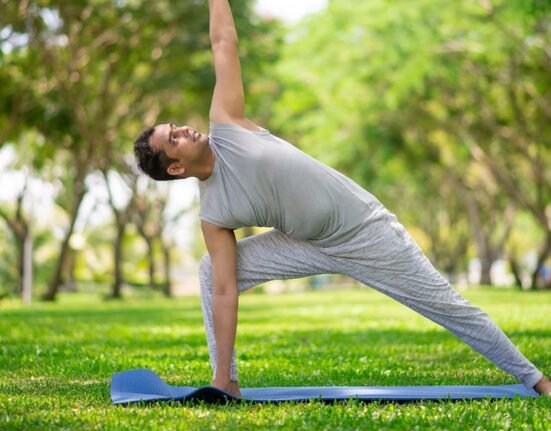We often experience stress because of day-to-day activities. Stress is a common cause of physical and mental health problems. According to the Ipsos World Mental Health Day report 2024, on average, 31% of people felt stressed across 31 countries, which had an impact on their daily lives at least once. Biofeedback training can play an effective role in stress management. This systematic approach provides real-time information about one’s bodily responses in association with stress and teaches people how to alter them to reduce the negative effects.
What is “Biofeedback”?
Biofeedback is a mind-body technique that can monitor and control physiological signs that are influenced by mental processes. People understand how their body responds to stress, anxiety, and chronic pain, helping people apply soothing techniques to control these responses, such as sweating, heart rate, muscle responses, and breathing. The wearable devices or wired electrical pads measure signals with the use of sensors, and this data is presented on the screen.
For example, a sensor attached to the torso, finger, and ears to measure heart rate for managing depression, asthma (Lehrer & Gevirtz, 2014). A temperature regulation monitor may be attached to your finger to measure pulse rate (Malik & Dua, 2025). Practitioners considered this technique to be safe and side-effect free. It is a nonsurgical approach but uses advanced scientific machinery.
Some trivial stressors that are often ignored also adversely affect on a long-term basis. Biofeedback can work as a warning alarm for those little but harmful bodily changes, it also improves mental and physical well-being. People become aware of what’s inside of their body while experiencing any kind of stressors.
Biofeedback is used in Stress Management
Stress is the natural reaction to external stimuli. Two types of stress form outward reaction, one is eustress, which motivates you to take action, and another is distress, which puts our body in the fight-or-flight response mode. Rapid breathing pattern, excessive sweating, palpitations, and muscle tensions are all autonomic signals that occur in stress. Biofeedback gives us the authority to consciously adjust those bodily changes that are involuntary. The selection of biofeedback type depends on which physical parameter you want to measure (Yu B, Funk, et al. 2018).
1. Electromyography
It is used to monitor muscle tension. All muscles contract in stressful situations, which might lead to musculoskeletal disorders (American Psychological Association, 2023). Sensors are connected to various muscle points for measuring these muscle contractions. Muscle relaxation techniques are used to release muscle contractions (Stress Effects on the Body, 2018).
2. Thermal biofeedback
Have you ever noticed your hands become cold before an interview? The coldness of the hands indicates less blood flow to the hands. Thermal biofeedback measures the temperature of the skin because warmer skin temperature is a sign of a relaxed state. People learn to control blood circulation.
3. Galvanic skin response
Excessive and sudden sweating can be a bodily reaction to stress. It measures the amount of sweat on the skin. The significant parameter for emotional reaction.
4. Heart rate variability
It measures heart rate irregularities, such as slow heartbeats or rapid heart rates. This biofeedback used ECG and Blood volume pulse signals. By slow breathing techniques, people can reduce their stress and calm their irregularities in heart rate. (Yu B, Funk, et al. 2018).
5. Respiratory biofeedback
Respiratory problems occur especially in asthma or other respiratory diseases. Rapid or shallow breathing occurs because of stress and heightened emotional reactivity. So, measuring breathing patterns can give an overview of how we react to stress. The relaxation, breathing techniques help control and gradually eliminate those responses. (American Psychological Association, 2023).
Benefits of biofeedback
Biofeedback can be identified as a mind-body awareness technique because people get insights into mental processes and bodily responses. More than just an awareness technique, it also shows you a pathway to cope with your stress-related symptoms. By having clear picture of these symptoms, coping will be more easier.
Read More: The Potential of Biofeedback in Managing Anxiety
If one completes the biofeedback training consistently, then it improves emotional regulation and sleep quality, reduces the symptoms of stress-related conditions. Therapists, clinicians used biofeedback along with relaxation techniques, cognitive-behavioural techniques, and medications. The smart watches, health care apps can give real-time feedback. These wearable devices are empowering individuals because they inculcate self-regulation. People can bring positive changes at home by themselves.
Effectiveness
The comprehensive review on HRV biofeedback in 2021, also found the supportive evidence of examination of benefits of HRV biofeedback for reducing stress, anxiety, and depression. It shows that symptoms were reduced for several weeks to 1 year after the sessions were terminated. These results suggest that this approach can have long long-lasting effect. Those respondents have noticed self-compassion and a sense of well-being.(Claire Florian et al. 2021).
According to the study of An Investigation Of The Effectiveness Of Biofeedback-Based Stress Management Training For College Going Students with undergraduate students in 2024, the emotional regulation has improved, and they have seen a reduction in anxiety levels.
The bottom line
Stress management involves many ways, such as diet, sleep, exercise, and relaxation techniques. Biofeedback is a versatile technique that provides a clear map for applying stress relief strategies. It has created its system of when to take action and at what intensity to reduce or control physiological signs. But only this plan of action needs consistency. Without consistency, the training output may diminish. By gaining a lot more insights, people understand how their bodies react to stress. It’s a drug-free technique but provides an impactful outcome, which is highlighted in research papers— reduction in anxiety, better quality sleep, and emotional regulation. The growing use of biofeedback, which is supported by empirical evidence; therefore, is found to useful tool in clinical and everyday settings.
FAQs
1. What is biofeedback best used for?
It is commonly used in physical therapy to relieve pain and to provide relaxation techniques. But primarily used to control physiological signals like high blood pressure, tension headache, stress management, migraines, and chronic pain.
2. Is biofeedback used for depression?
It is used in combination with pharmacological and other treatments.
3. What is the principle of biofeedback?
The principle involves providing real-time information about physiological responses. It also teaches people how to control those involuntary processes through our conscious effort for a consistent period.
References +
- Lehrer PM, Gevirtz R. Heart rate variability biofeedback: How and why does it work?. Front Psychol. 2014;5:756. doi:10.3389/fpsyg.2014.00756
- Piazza, J. R., Charles, S. T., Sliwinski, M. J., Mogle, J., & Almeida, D. M. (2013). Affective reactivity to daily stressors and long-term risk of reporting a chronic physical health condition. Annals of behavioural medicine: a publication of the Society of Behavioral Medicine, 45(1), 110–120. https://doi.org/10.1007/s12160-012-9423-0
- Claire Fournié, Florian Chouchou, Georges Dalleau, Teddy Caderby, Quentin Cabrera, Chantal Verkindt (2021), Heart rate variability biofeedback in chronic disease management: A systematic review, Complementary Therapies in Medicine https://doi.org/10.1016/j.ctim.2021.102750.
- Yu B, Funk M, Hu J, Wang Q and Feijs L (2018) Biofeedback for Everyday Stress Management: A Systematic Review. Front. ICT 5:23. doi: 10.3389/fict.2018.00023
- American Psychological Association. (2023, March 8). Stress effects on the body. https://www.apa.org/topics/stress/body
- Dr.Lubhawani Tripathi et al. (2024) An Investigation Of The Effectiveness Of Biofeedback-Based Stress Management Training For College Going Students Educational Administration: Theory and Practice, 3(5), 4734-4740 Doi: 10.53555/kuey.v30i5.2978
- Ipsos World Mental Health Day Report 2024. (2024, October 15). Ipsos. Retrieved May 5, 2025, from https://www.ipsos.com/en-id/ipsos-world-mental-health-day-report-2024 8. Lehrer, & Gevirtz. (2014). Heart rate variability biofeedback: How and why does it work? Front Psychol.
- Malik, & Dua. (2025, January 18). Advancing Patient Care With Biofeedback – StatPearls. NCBI. Retrieved May 5, 2025, from https://www.ncbi.nlm.nih.gov/books/NBK553075
- Stress effects on the body. (2018, November 1). American Psychological Association. Retrieved May 5, 2025, from https://www.apa.org/topics/stress/body













Leave feedback about this